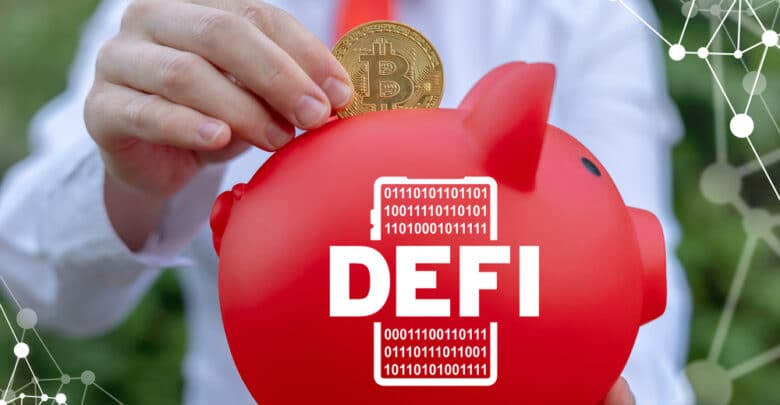How to Identify Scams in DeFi (Decentralized Finance) Space

Over the years, it has been proven that every thriving system is always infiltrated by scammers and people with malicious intent. And in this case, the Decentralized Finance space is not exempted. As more and more people are fascinated with the financial revolution pioneered by DeFi, scammers, and people with malicious intent are also finding their roots in the space to take advantage of unsuspecting people.
Based on the setup of the decentralized finance space, it is an unforgiving space that gives no way to recover funds or even the identity of the malicious actors as a way of holding them accountable. However, with the right arsenal of knowledge, you can reduce your chances of getting caught on the web of these scammers and make it difficult for them to take advantage of you.
This guide aims to give you the necessary details to identify scams in the DeFi space and how you can avoid them.
Introduction to the DeFi Space
There are diverse innovations that come with the decentralized finance (DeFi) space. Also, with the rate at which the space is birthing new products and projects almost every minute, it is becoming extremely difficult to keep up with the pace, and DYOR – Do Your Own Research – can be difficult.
Of course, we appraise the blockchain technology for being permissionless, which is another way of saying that it is public as there is no central agency regulating operations on it. This means that you don’t need the permission of anyone to use blockchains, develop them, or even launch your projects on them. This trait of the blockchains shared its value with cryptocurrencies like Bitcoin, Ethereum, and others, but it also has its negative aspects at the same time.
To put it in better perspective, anyone can be in the corner of their room, workspace, or wherever to launch a project on any blockchain of their choice. These projects can be misleading or even be scams, but there is no central authority to inspect, regulate or stop them. Well, technically speaking, it is not as though there is nothing to do, as a community in the crypto space, we can help ourselves with the necessary amour of information that can help us identify the patterns that separate misleading and scam projects from the legitimate innovations in the space.
This, however, is the motivation for this guide. The following sections will highlight and explain what are the patterns to look for to identify scam projects in the crypto space.
For what purpose was the project Created?
For newbies in the DeFi space, this may look like it is an obvious question to ask, but it is expedient that we emphasize it.
When you look deeply into the DeFi space, you will discover that majority of the crypto projects there don’t have any new innovation or exciting value proposition to present to the space. But instead, they just existed to leverage the buzz and attention that the DeFi space has created over the years.
So, before identifying with any project, the question you should ask is – What is the new thing this project is trying to innovate? Is the project contributing to the new digital economy created by the DeFi space? What differentiates this project from its competitors in the DeFi space? What is the unique value proposition this project is bringing to its users?
These questions seem more like common-sense and simple questions to ask. But if you are not intentional about asking, you won’t be able to suspect any scam projects in the space. However, the answer to these questions, when combined with the other points raised in the following section will help you filter a good portion of misleading and scam projects in the space.
The Development Activity of the Project
Outside the other questions, one of the things you want to look into is the developer activity of the project. The DeFi space is made with the tendency of being open-source.
The implication of this is that with little knowledge of coding, you can go ahead to examine their code by yourself, and this is a great advantage for the open-source platforms because you can identify duplicate projects and, through that uncover projects with malicious intentions.
Another thing you are looking out for in this section is continuous activities from the project developers. The question is – are they updating the code of the project continuously? While this might not be the perfect way to identify scams, it can be combined with some other ways to know if the developers are real or if they just create the project to scoop people’s money.
Smart Contract Audits
Something very common with the decentralized finance space and smart contracts is Auditing. Ideally, audits are supposed to be an integral part of smart contract development because it is the only to measure the level of security attached to the smart contracts, but many developers are okay with deploying their codes with carrying out the audits. This can single-handedly increase the risk of using smart contracts because you can never tell if there is a vulnerability in the smart contracts.
What you must pay attention to is that the cost of audits is expensive, but irrespective, legitimate projects will be willing to pay for it, but scam projects will not bother, perhaps they introduced the loopholes in the smart contracts themselves to scam people.
However, this does not mean that all audited smart contracts are completely safe to use. As much as smart contract audits are necessary, it doesn’t translate to total safety. You must always be aware of the risk of using a smart contract and the implication on the funds you deposited.
But with this knowledge and others being treated in this guide, it will be easier for you to identify scam projects in the DeFi space.
The Identity of the Founders
The entirety of cryptocurrency and blockchain technology is founded on the freedom of privacy specifically anonymity and pseudonymity that they can obtain on the internet. As a matter of fact, no one has been able to uncover the identity of the person (or group of persons) that created the first crypto asset – Satoshi Nakamoto.
However, what you must consider is that there is an additional risk attached to projects whose team is made up of anonymous founders. This is because there are higher chances that they are scammers who are trying to evade accountability, in case the project crumbles.
While the tools for blockchain analysis are getting more and more sophisticated, it is still a different ball game if the reputation of the founders is at stake because of their real-world identity attached to the project. Though this is not to say that all projects that are led by anonymous teams are scams because there are projects with similar scenarios out there that are thriving, what this guide is trying to posit is that it is a matter of necessity to consider the implications of team anonymity when evaluating the projects you want to invest in.
In summary, are projects with team anonymity all scams? No. Is it difficult to hold anonymous founders accountable for malicious activities through the project? Yes.
The Token distribution of the project
When you are researching DeFi projects to invest in, a crucial aspect of your research should be token economics. One of the ways scammers perpetrate their acts is by inflating the price of the token while they are holding a huge portion of the token, and then they eventually dump it on the market.
Have you considered the implication of dumping around 50-60% of the entire token supply on the open market? Definitely, the price of the token will drop, and it will lose almost all its value. Even though having allocation for the founders is not bad in itself or be tagged as a red flag for identifying scam projects, it can be a problem along the line.
Apart from token allocations, another thing you want to consider is how the tokens are distributed. Is it done through an exclusive private pre-sale which is only available to the insiders who get great deals while they hype the project on the outside on social media, or is there an Initial Coin Offering (ICO), where everyone benefits from the sales, or is there an Initial Exchange (IEO)? The benefit of the last part of the question is to check which exchange is putting its reputation at risk for the sake of the project. Also, you will want to consider if they are distributing much of the token through airdrops which can cause huge sell pressure on the token.
There are a lot of nuances to consider in the token distribution model, and in some cases, it is difficult to lay hold of the information, which is a red flag in itself. But in a real sense, to get a full picture of the intentions and plans of the project, this information is absolutely important.
How likely are they to exit the market?
A new way to launch DeFi tokens and projects is through yield farming or liquidity mining. This distribution method is used by many projects in the DeFi space as a way to create distribution metrics that are favorable for the project. The basic idea behind this is that users are required to lock away their funds into smart contracts which will, in turn, deliver a portion of the newly minted tokens for them.
You can predict how things might turn out eventually, some of the projects will just take the funds that are in the liquidity pool, while some will use a more sophisticated method or set up a pre-mine system.
Adding to this, new altcoins are first listed on AMMs – Automated Market Makers such as Sushiswap or Uniswap and if the team behind the project is not providing a reasonable amount of liquidity for their market pairs on the AMM, they can just remove it at any time and dump the tokens on the market. This means that no matter how much the token has risen, it will fall back to zero and there will be no market you can sell them. This is the phenomenon called “Rug Pull” in the crypto space.
The type of Scams in the DeFi space
It is quite impossible to do away with scams and fraud in the DeFi space, but as mentioned earlier, it is essential to have adequate information that will help avoid them. This section will uncover the different types of scams in the crypto space – more like the different ways scammers carry out their malicious intent in the space.
1. Rug Pull
Rug pulls are the common scams in the DeFi space, but they can also be easier to spot when you have adequate information.
This scam is built on the hype the developers can generate around the project by painting it as a revolutionary project. This will attract support from the crypto community of which a larger percentage will turn out to be an investor in the project.
After a while of attracting investors and inflating the price of the token, the developer will dump the tokens on the market and vanish with the funds. Contrary to what they proclaim, the developers have no intention to build the project with the funds realized from investors, but simply to gather enough hype that can drive the value of the token while they wait for the perfect time to exit the market.
The reason for the term “rug pull,” is because the action is similar to pulling the rug from underneath the investors, which can lead to an accident for whoever is on the rug. However, a way to spot this scam is to pay attention to the relationship between the developers and their communities and the token distribution plans as explained earlier.
Most of the time, the community is giving constant updates to create FOMO – Fear of Mission Out among the non-investors. A similar scam is the Pump and Dump scam though it is not exclusive to the DeFi space.
In conclusion, it is possible for a token to be unruggable, and that happens when the amount of token held by the team is not enough to crash the market around the token or when the team completely hand over the tokens in their control, such as the ones they purchase during the pre-sale.
2. Social Media Scams
On Twitter, there are scam accounts people are using to impersonate different celebrities either in the crypto space or outside. The accounts are then used to target crypto enthusiasts about new projects they are championing and they can even announce fake competitions and giveaways, which will request users send funds to an address or even force users to buy a particular token.
A way to check if these accounts are legitimate is to consider the number of followers. It will probably be in thousands compared to the millions of followers the original account has. Also, there are often misspellings in the name of the account (to bypass impersonation checks) and their contents. Outside these checks, you should be aware that you should never respond to anyone asking you to send money to an address on Twitter.
This kind of scam might sound ridiculous, but people still fall for them on daily basis.
3. Phishing Scams
This is kind of scam is as old as the internet because the tactics remain the same. Scammers will pretend to be a legitimate company so they can get hold of your personal information.
However, DeFi phishing is usually conducted through email when the scammer(s) will pretend to be a representative of the protocol or trading platform and makeup stories like “your account has been compromised”. In this email, they will request your email and passwords, including wallet addresses. They might even be asking that users send in their funds to them.
These emails often lead to fake websites that are similar to the original platform, thereby enticing innocent victims to input their private information.
A way to avoid this is to crosscheck the email address of the contact. Also, these emails often contain random characters instead of the actual name of the website. However, it is advised not to click any link from any suspicious look email. With this, you can ensure your safety in the DeFi space.
Conclusion
Irrespective of what you do in the DeFi space, either you just use the decentralized protocols to trade and exchange tokens, or you are taking part in the yield farming feature in the space, you must be aware that there are still scams in the DeFi space and they are abundant. We hope that this guide will help you spot the projects launched with malicious intent.
The disclaimer here is that the article is purely to guide in protecting users and investors of the DeFi space and the crypto space entirely. It is should not be considered financial advice on any ground, as the responsibility of your investment decisions will not be laid on the content of this guide.
Tokenhell produces content exposure for over 5,000 crypto companies and you can be one of them too! Contact at info@tokenhell.com if you have any questions. Cryptocurrencies are highly volatile, conduct your own research before making any investment decisions. Some of the posts on this website are guest posts or paid posts that are not written by Tokenhell authors (namely Crypto Cable , Sponsored Articles and Press Release content) and the views expressed in these types of posts do not reflect the views of this website. Tokenhell is not responsible for the content, accuracy, quality, advertising, products or any other content or banners (ad space) posted on the site. Read full terms and conditions / disclaimer.







